21 TV Shows from the 1980s that are All But Forgotten Today
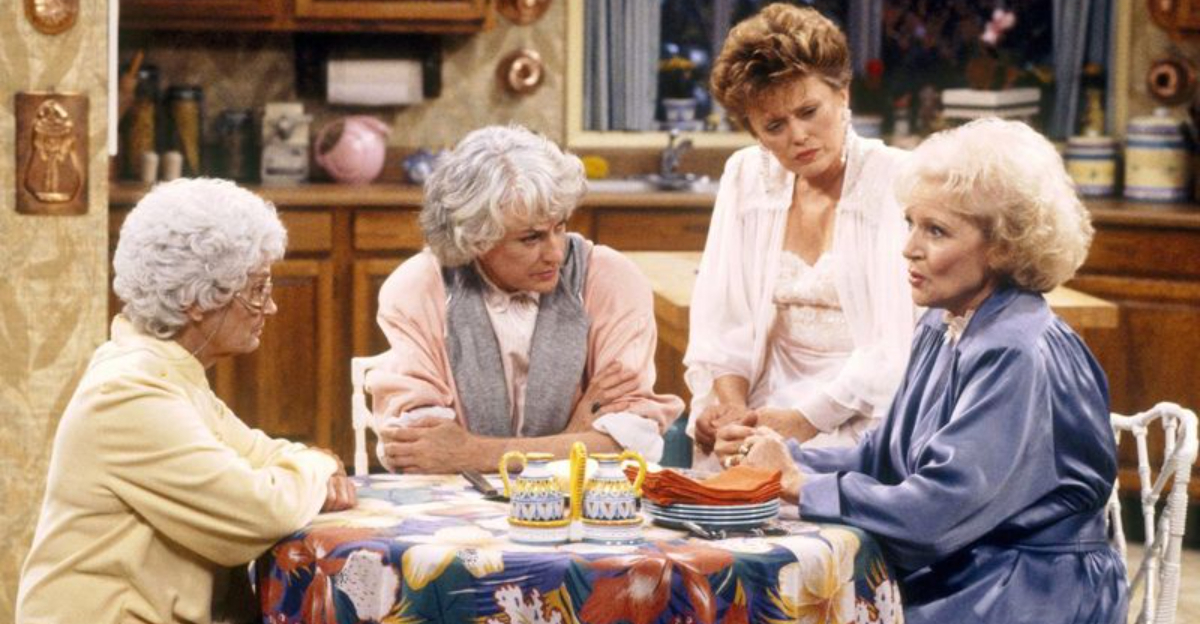
The 1980s brought us big hair, neon colors, and some of the most memorable television shows ever created. These shows shaped childhoods, defined pop culture, and continue to influence entertainment today.
From crime-fighting cars to alien puppets, the television landscape of the ’80s was as colorful and diverse as the decade itself.
1. Knight Rider’s Talking Car Stole Hearts
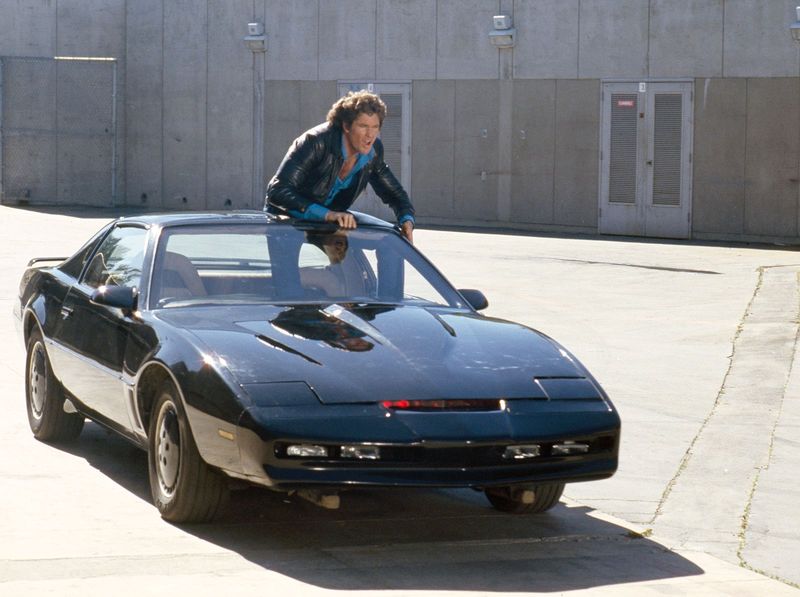
Michael Knight and KITT formed the ultimate crime-fighting duo when this show hit screens in 1982. The advanced AI-powered Trans Am could talk, think, and jump over obstacles with surprising grace.
David Hasselhoff’s leather jacket became just as iconic as the car’s red scanner light sweeping back and forth. Fans still debate whether KITT was the coolest TV vehicle of all time.
2. The A-Team’s Van Remains Unforgettable
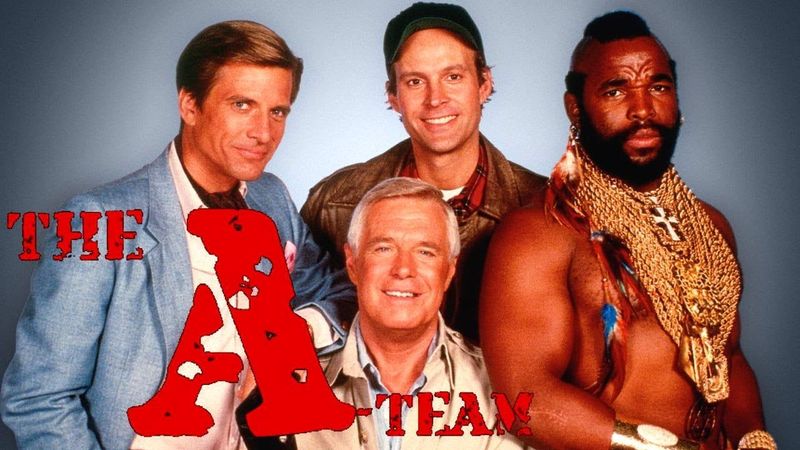
Four Vietnam veterans on the run from the military while helping those in need? Pure television gold! Mr. T’s mohawk and gold chains became cultural symbols overnight.
The black and metallic gray GMC van with the red stripe was practically the fifth member of the team. Despite countless explosions and gunfights across 98 episodes, hardly anyone ever got seriously injured on this action-packed show.
3. ALF Brought Alien Humor Home
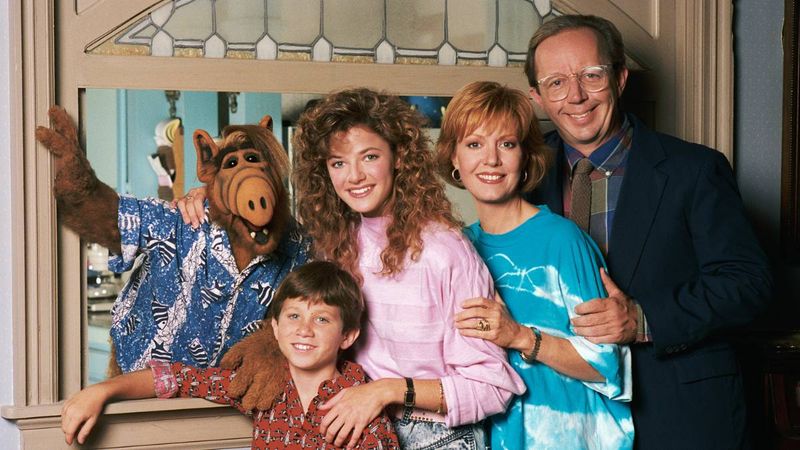
Gordon Shumway, better known as ALF (Alien Life Form), crash-landed into the Tanner family’s garage and into our hearts. This furry, sarcastic alien from the planet Melmac had an appetite for cats and one-liners.
Behind the scenes, the puppet required four operators and made filming notoriously difficult. Despite production challenges, ALF’s wisecracks and fish-out-of-water situations created comedy gold that still gets quoted today.
4. MacGyver Made Science Cool
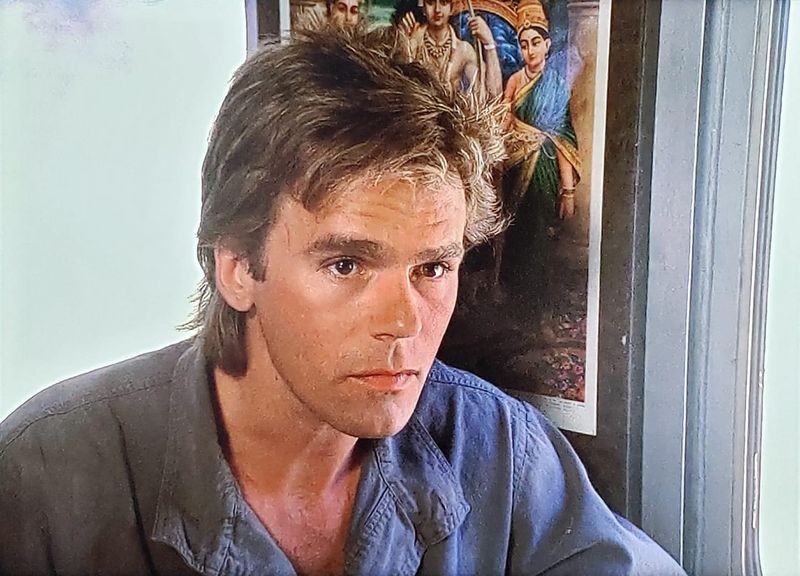
Armed with just a Swiss Army knife and scientific know-how, Angus MacGyver could disarm a missile with a paperclip or escape any trap using everyday items. Richard Dean Anderson’s mullet was almost as impressive as his character’s improvisation skills.
The show made such an impact that “MacGyver” became a verb meaning to solve problems creatively with limited resources. No wonder modern reboots couldn’t capture the original’s special blend of action and educational content.
5. Miami Vice Redefined TV Style
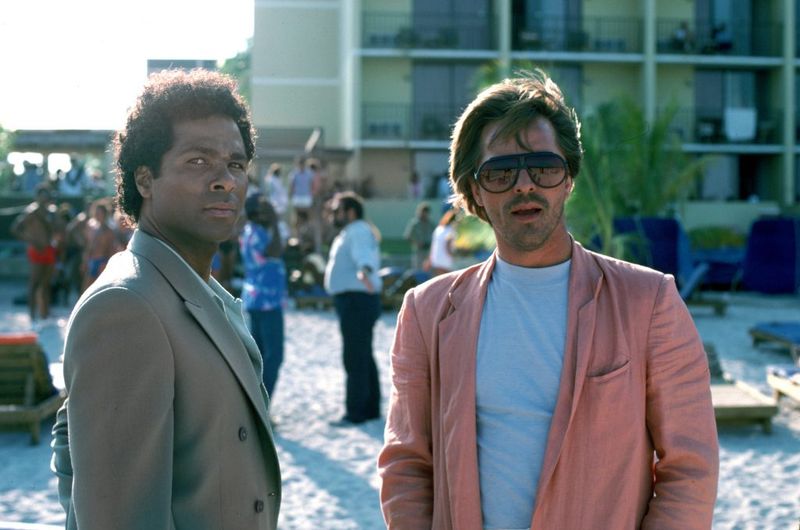
Pastel suits, no socks, and stubble became the look every man wanted after Don Johnson and Philip Michael Thomas hit the screen. The show’s flashy aesthetics influenced everything from fashion to music video production.
Ferrari Testarossas and Phil Collins soundtracks created a visual and audio feast unlike anything television had seen before. Miami Vice was a cultural phenomenon that turned Miami into a stylish destination and forever changed how TV shows approach visual design.
6. Cheers Welcomed Everyone Where Everybody Knows Your Name
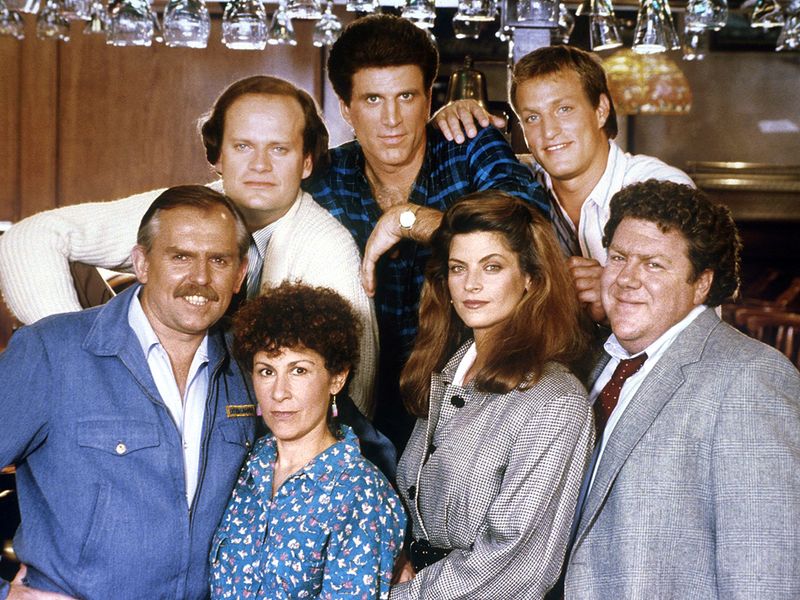
Set in a Boston bar where locals gathered to escape life’s problems, Cheers created a place viewers wished they could visit after a long day. The Sam and Diane romance became television’s quintessential will-they-won’t-they relationship.
Norm’s entrances always got applause, while Cliff Clavin’s trivia became legendary for being mostly wrong. The theme song promised a place “where everybody knows your name” – a comforting thought that helped the show run for 11 successful seasons.
7. The Golden Girls Proved Age Is Just a Number
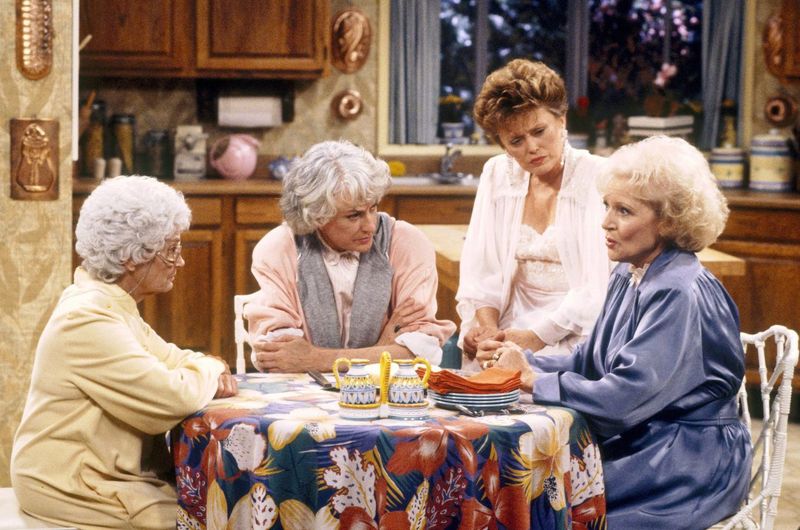
Four older women sharing a home in Miami created comedy gold and broke stereotypes about aging. Dorothy’s sarcasm, Rose’s St. Olaf stories, Blanche’s romantic adventures, and Sophia’s “Picture it, Sicily” tales still make viewers howl with laughter.
Cheesecake at the kitchen table became the setting for some of television’s most honest conversations about friendship, dating, and growing older gracefully. The show tackled serious issues like AIDS, homelessness, and LGBTQ+ rights with surprising sensitivity for its era.
8. Family Ties Captured Generational Divides
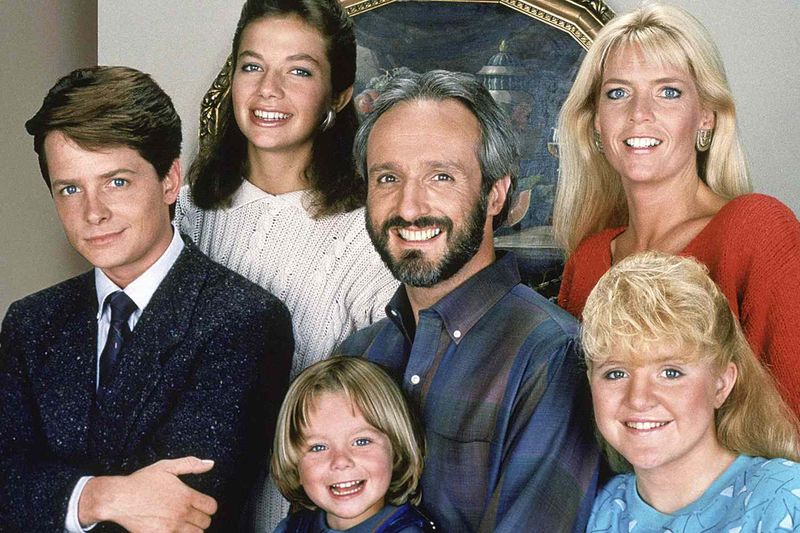
Alex P. Keaton, portrayed by Michael J. Fox, became the poster child for Reagan-era conservatism while his ex-hippie parents represented liberal values. The political friction created perfect comedic tension in this beloved family sitcom.
Fox’s charisma turned what was supposed to be a supporting character into the show’s breakout star. “Sha-la-la-la” from the theme song still triggers instant nostalgia for viewers who grew up watching the Keaton family navigate the cultural shifts of the 1980s.
9. Magnum, P.I.’s Mustache Set Standards
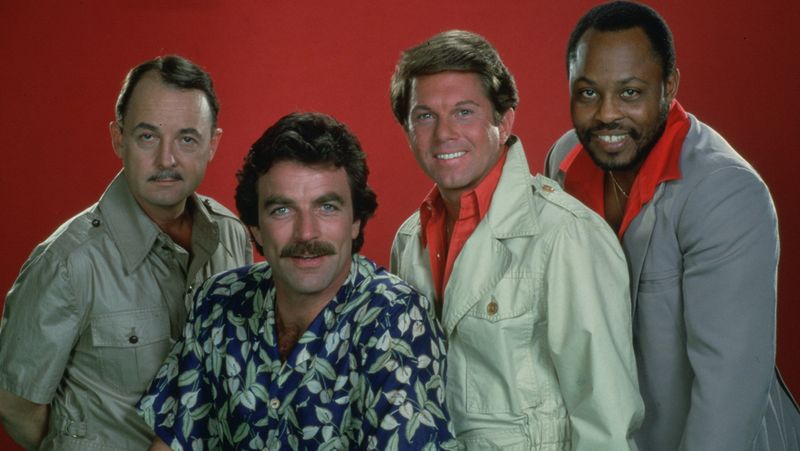
Tom Selleck’s magnificent mustache and Hawaiian shirts became so iconic that they’re still instant costume party winners decades later. His character, Thomas Magnum, lived in a guest house on a luxurious Hawaiian estate, solving cases while driving a Ferrari 308 GTS.
The show balanced action, comedy, and occasional deep dives into Magnum’s Vietnam War experiences. Higgins and his Dobermans, Zeus and Apollo, provided perfect comedic foils to Magnum’s laid-back charm in this paradise-set detective series.
10. The Dukes of Hazzard’s General Lee Jumped Into History
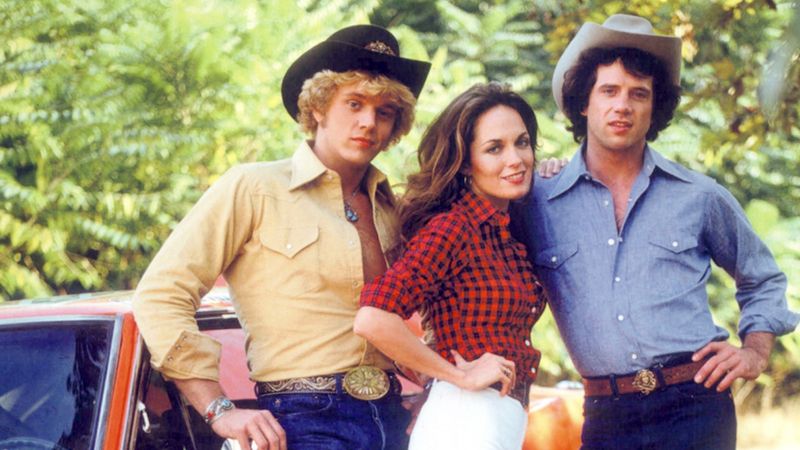
The orange 1969 Dodge Charger named General Lee became the true star of this Southern-fried action comedy. Bo and Luke Duke’s spectacular car jumps were performed by real stuntmen in an era before CGI dominated action sequences.
Daisy Duke’s name became synonymous with short-shorts, adding another permanent contribution to pop culture vocabulary. The show’s combination of car chases, country humor, and catchy theme song created a formula that kept viewers tuning in week after week.
11. Hill Street Blues Revolutionized Police Dramas
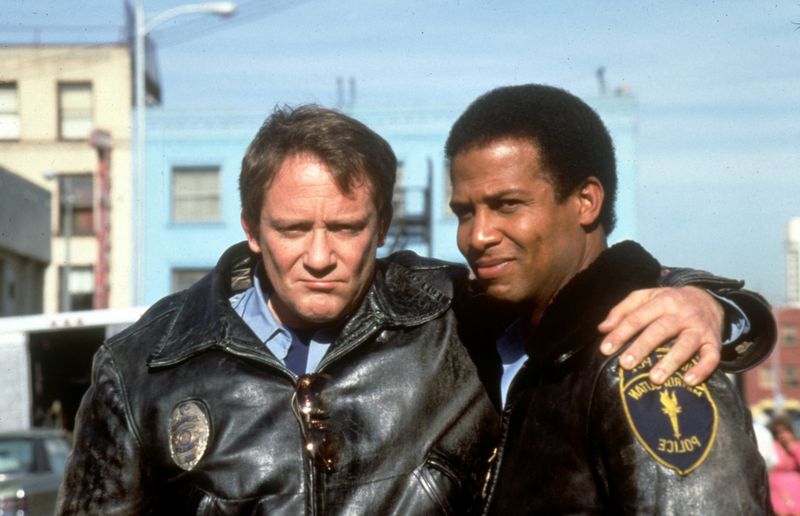
“Let’s be careful out there” became the catchphrase that launched a thousand episodes of gritty, realistic police drama. Hill Street Blues transformed television with its documentary-style camera work and overlapping dialogue.
The show juggled multiple storylines and complex characters in ways that hadn’t been seen before. Its influence can be felt in virtually every police procedural that followed, from NYPD Blue to The Wire, making it perhaps the most influential cop show ever made.
12. Diff’rent Strokes Asked What Willis Was Talking About
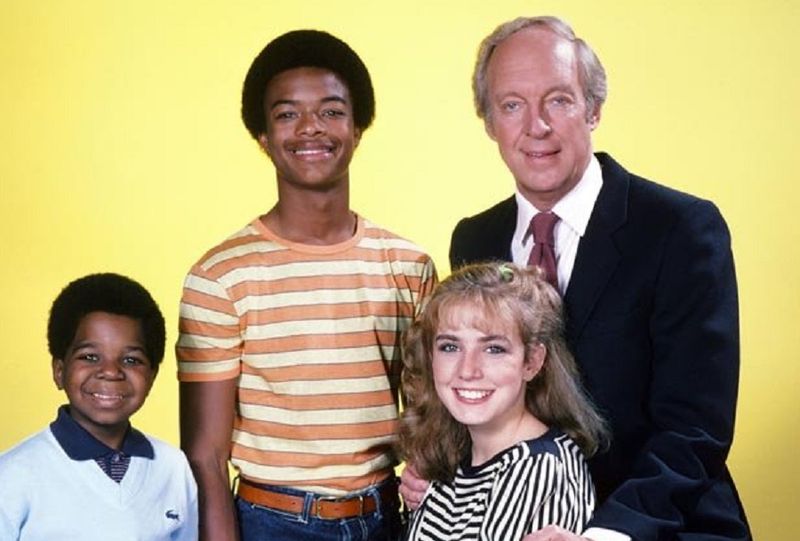
Gary Coleman’s question “Whatchu talkin’ ’bout, Willis?” became one of television’s most quoted catchphrases. The premise of two African American boys from Harlem being adopted by a wealthy white businessman created both comedy and opportunities to address serious social issues.
The show didn’t shy away from tackling topics like racism, drug use, and child abuse. Despite behind-the-scenes struggles for the young actors, the show’s legacy as groundbreaking family entertainment endures in reruns and cultural references.
13. The Facts of Life Taught Valuable Lessons
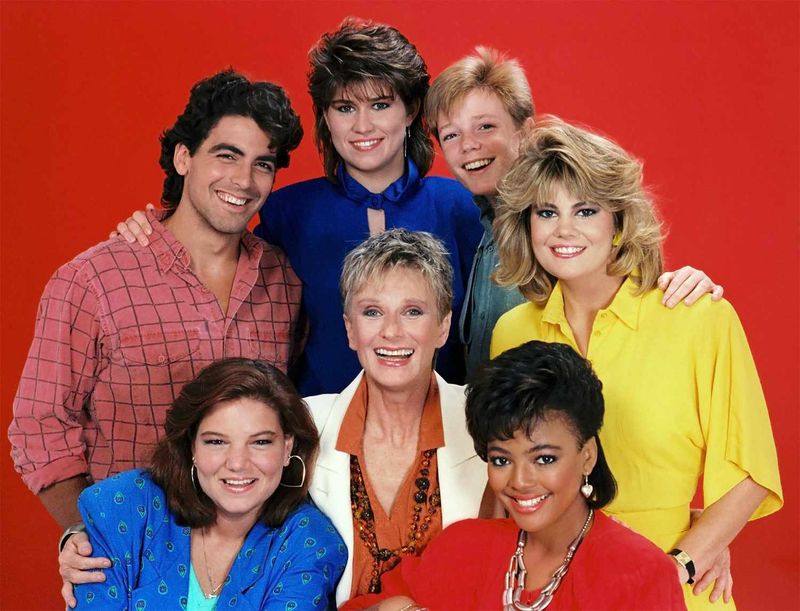
Following the lives of girls at a private boarding school, this “Diff’rent Strokes” spin-off became a hit in its own right. Mrs. Garrett’s maternal guidance helped the girls navigate adolescent challenges with humor and heart.
Blair’s snobbery, Tootie’s roller skates, Natalie’s jokes, and Jo’s tough exterior created a perfect ensemble dynamic. The show evolved as the characters grew up, eventually moving them into college and careers while maintaining its core message about female friendship and personal growth.
14. Who’s the Boss? Flipped Gender Roles
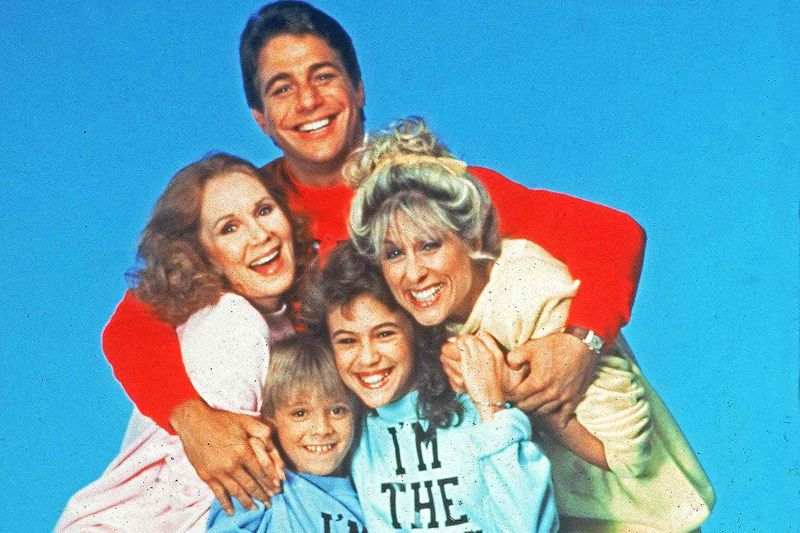
Tony Danza played a former baseball player who became a live-in housekeeper for a female advertising executive, turning traditional gender roles upside down. The will-they-won’t-they romance between Tony and Angela kept viewers tuning in for eight seasons.
Alyssa Milano grew up on screen as Tony’s daughter Samantha, while Katherine Helmond stole scenes as Angela’s man-crazy mother Mona. The show balanced workplace comedy, family dynamics, and romantic tension with a progressive outlook that was ahead of its time.
15. Growing Pains Captured Family Evolution
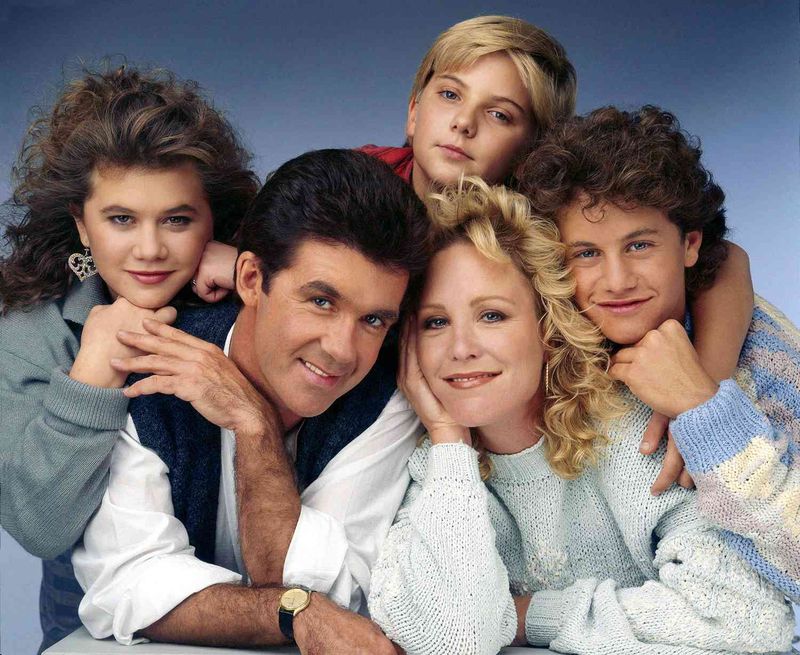
The Seaver family brought wholesome family comedy into living rooms weekly, with Alan Thicke’s psychiatrist dad working from home while Joanna Kerns’ reporter mom returned to the workforce. Kirk Cameron became a teen heartthrob as eldest son Mike.
The show’s theme song “As Long As We Got Each Other” perfectly captured its warm family dynamics. A young Leonardo DiCaprio joined the cast in later seasons, showing early glimpses of the Oscar-winning talent he would become in this quintessential ’80s family sitcom.
16. 21 Jump Street Launched Johnny Depp’s Career
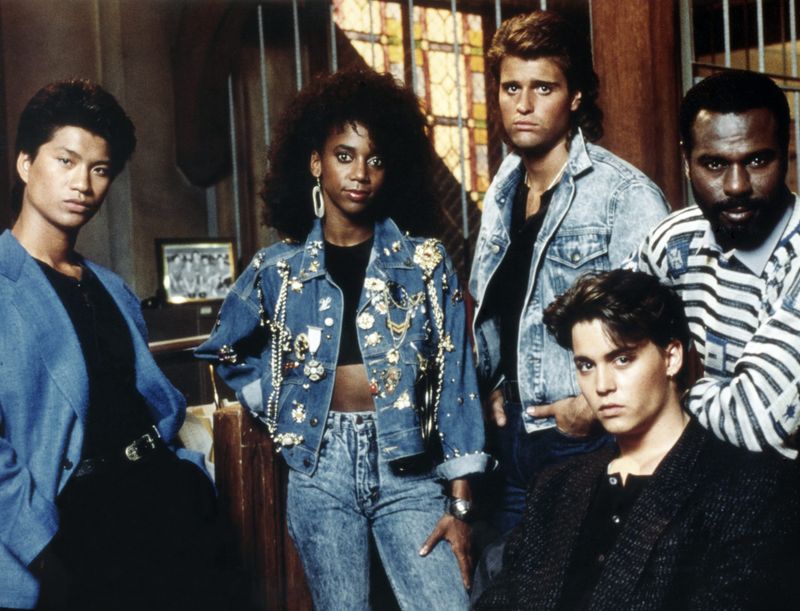
Young-looking cops going undercover in high schools created the perfect vehicle for addressing teen issues while delivering police drama. Johnny Depp’s reluctant heartthrob status began here, though he famously tried to get fired by acting increasingly outlandish.
The show tackled serious topics like drug abuse, hate crimes, and AIDS with a sensitivity unusual for its time. Before the comedic film adaptations, this was groundbreaking television that respected its young audience’s intelligence while delivering weekly entertainment.
17. Murder, She Wrote Kept Viewers Guessing
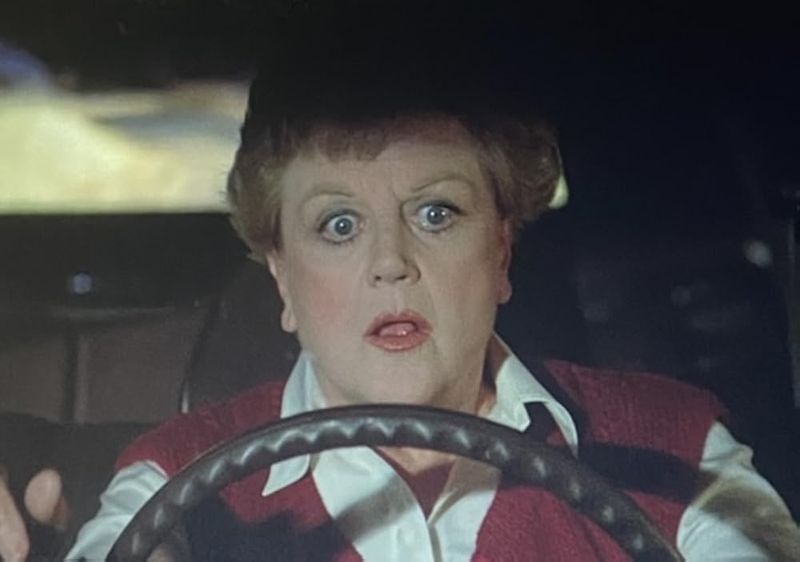
Angela Lansbury’s Jessica Fletcher, a mystery novelist and amateur detective, solved murders in the seemingly dangerous town of Cabot Cove, Maine. The show’s gentle pace and lack of violence made it perfect family viewing despite its murder-centered plots.
Lansbury’s performance earned her 12 Emmy nominations, though surprisingly no wins. The show’s formula of introducing several suspects before Jessica’s brilliant deduction revealed the murderer kept audiences engaged through 12 seasons and remains a comfort-watch favorite in reruns.
18. Moonlighting’s Banter Created Sparks
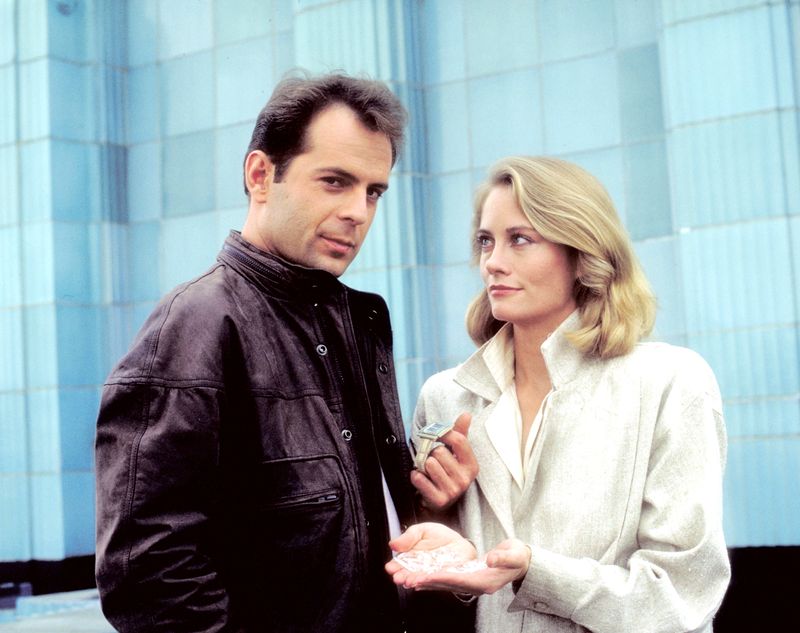
Bruce Willis and Cybill Shepherd’s electric chemistry as private detectives David Addison and Maddie Hayes created one of television’s most memorable couples. Their rapid-fire dialogue and unresolved romantic tension kept viewers coming back for more.
The show regularly broke the fourth wall, with characters addressing the audience directly. Famous for its production delays and behind-the-scenes tensions, Moonlighting nonetheless revolutionized the romantic comedy genre.
19. The Wonder Years Captured Nostalgic Growing Up
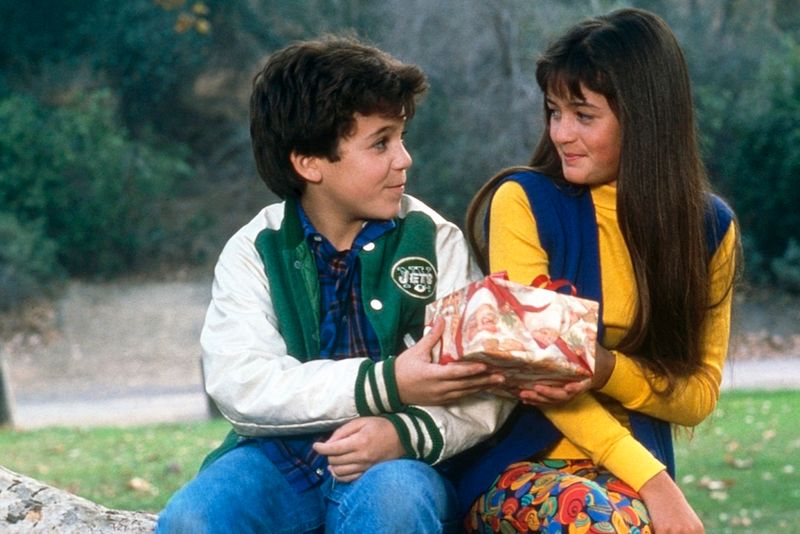
Fred Savage’s Kevin Arnold navigated adolescence in suburban America during the late 1960s and early 1970s, with Daniel Stern’s adult narration providing perspective.
Winnie Cooper became television’s ultimate girl-next-door crush, while Kevin’s relationship with his father showed the generational tensions of the era.
The show’s lack of laugh track and cinematic style set it apart from other family comedies. Its perfect blend of humor and poignancy in depicting universal coming-of-age experiences explains why it remains beloved despite being set in a specific historical period.
20. Dallas Asked Who Shot J.R.
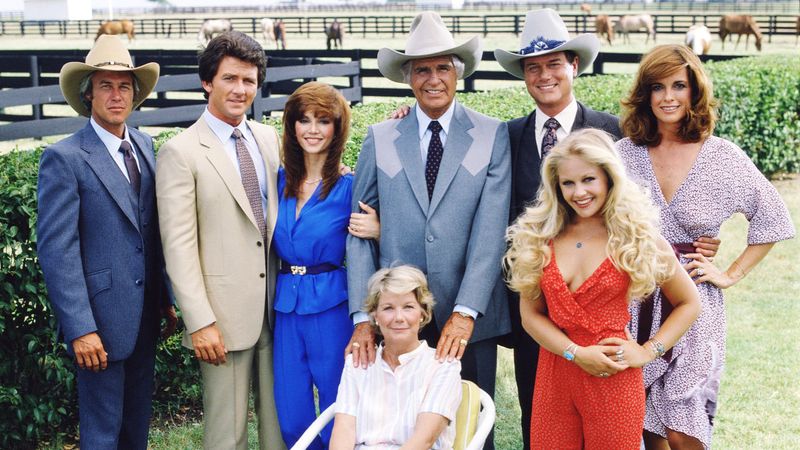
“Who Shot J.R.?” became the question on everyone’s lips during the summer of 1980, creating television’s most famous cliffhanger. Larry Hagman’s portrayal of oil tycoon J.R. Ewing set the standard for TV villains you love to hate.
The Ewing family’s backstabbing, oil deals, and romantic entanglements at Southfork Ranch captivated viewers worldwide.
The reveal of J.R.’s shooter drew 83 million American viewers, a record at the time, proving that sometimes television could still bring the entire country together around a shared cultural moment.
21. Quantum Leap Blended Sci-Fi With History
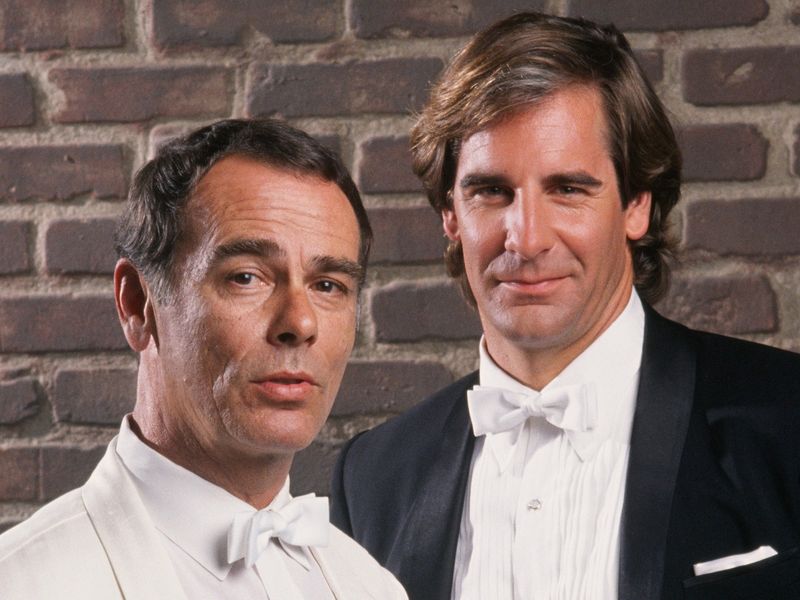
Scott Bakula’s Dr. Sam Beckett “leaped” into different people throughout history to fix things that once went wrong. His only companion was Al, a hologram only he could see, played brilliantly by Dean Stockwell.
Each episode allowed the show to explore different genres – western one week, film noir the next. The show’s famous ending, with text revealing that “Dr. Sam Beckett never returned home,” still ranks among television’s most discussed finales, leaving fans hoping for one more leap.
